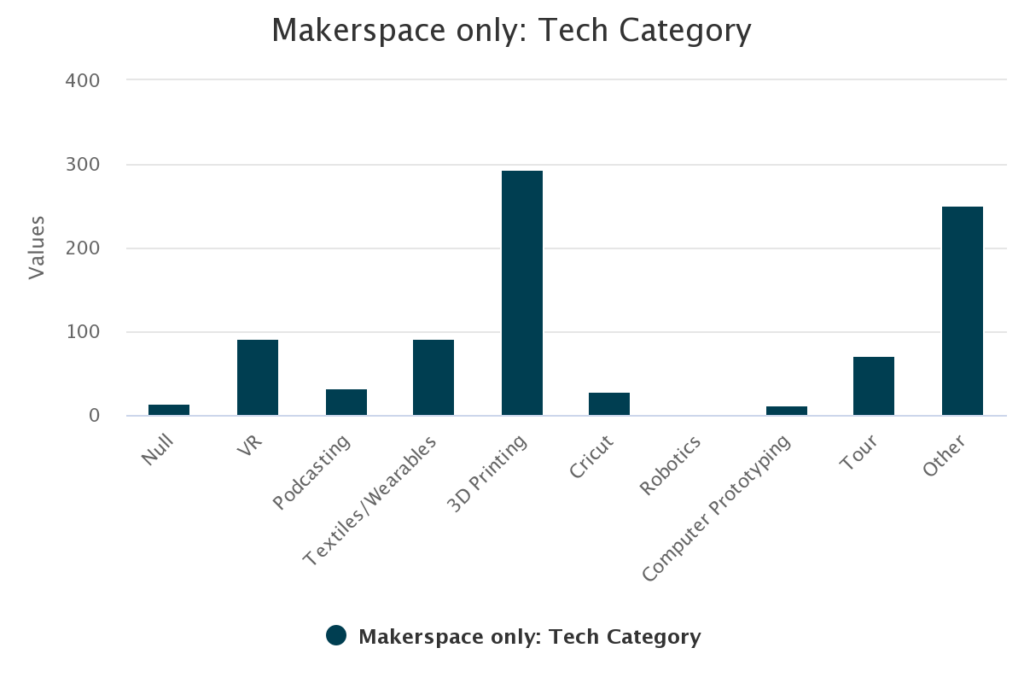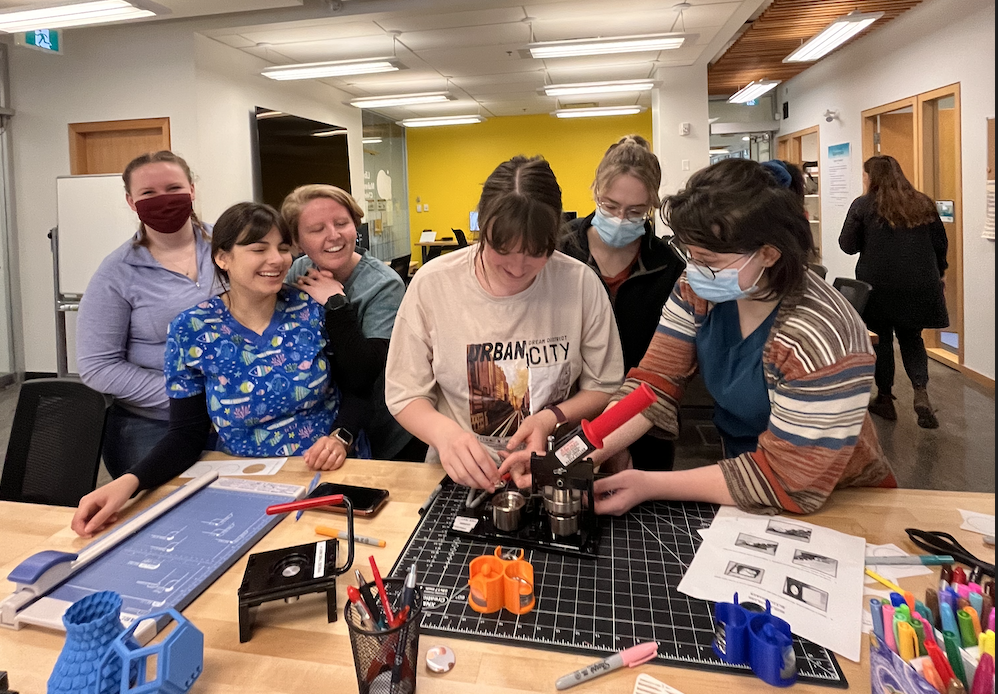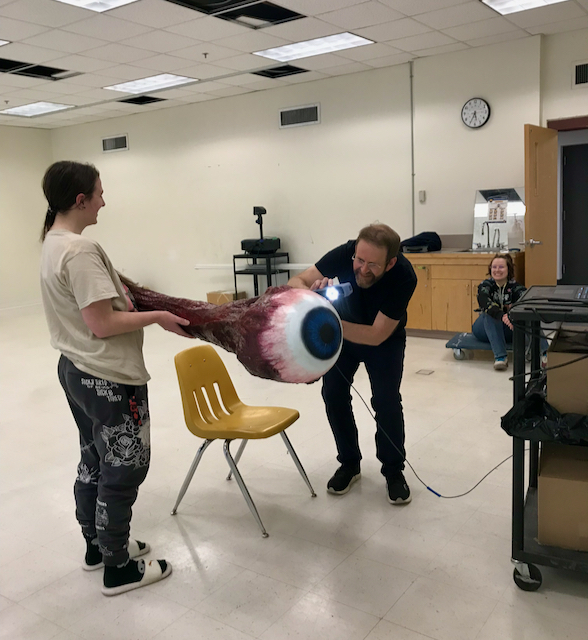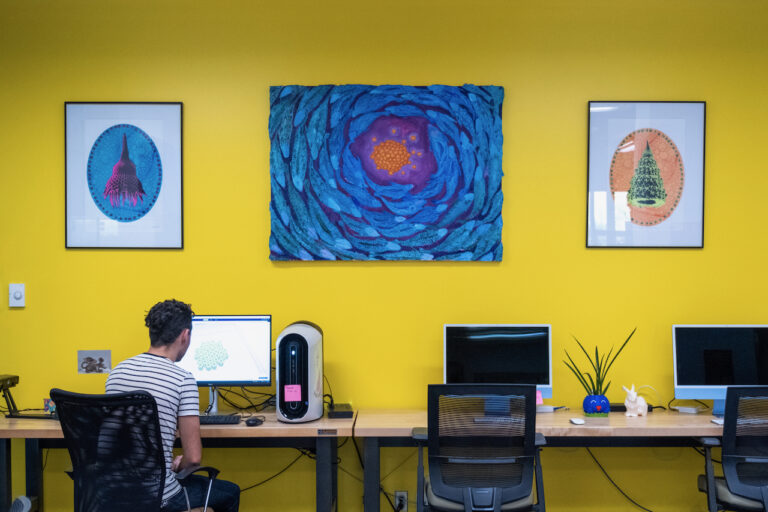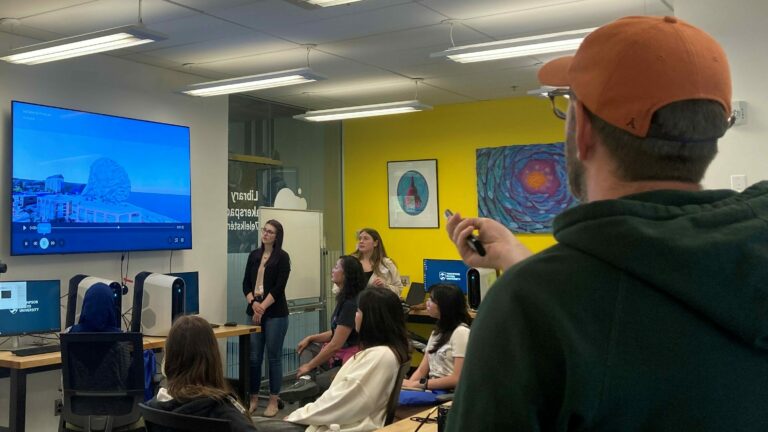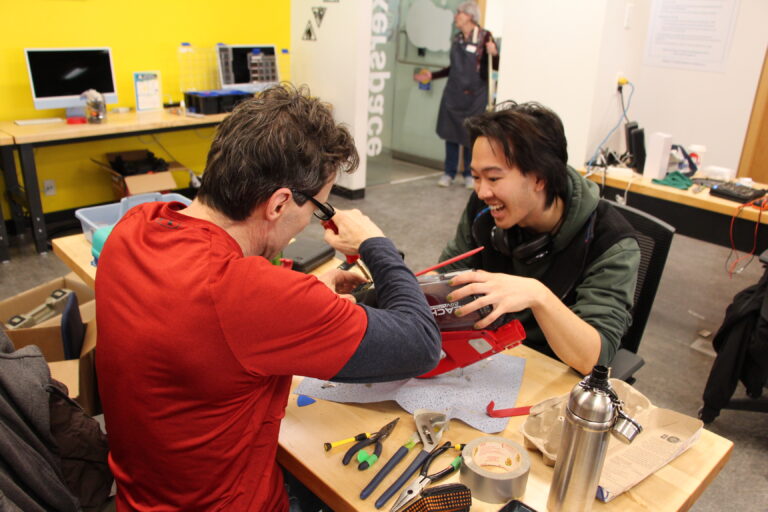Makerspace Librarian’s Winter 2022 End of Term Report
Our first term was incredibly busy and exciting. We finished building and outfitting the Makerspace with furniture, equipment, supplies, and literally hundreds of things required to make it functional. We continued learning how to use the technologies we provide — from podcasting to sewing and embroidery to 3D printers — that most of us had never used before. We had to delay opening due to covid and experienced epic problems caused by supply chain issues. We hosted our first users, tours, classes, and events and started figuring out how to work together and with users in this new space and service that is very unlike other any other on campus. Most importantly, we learned that there is a lot of demand for a Makerspace at TRU and that this demand is matched by our community’s excitement, expertise, and talent.
This report is meant to share some of our milestones, successes, failures, and learnings. I hope to write these a couple times a year around the end of each term. As this is my first report, I also want to take a moment to thank those involved in making the Makerspace happen. TRU Library’s acting University Librarian Tania Gottschalk and acting Associate University Librarian Julia Wells have been incredibly supportive in getting resources and staffing in place. Administrative Assistant Jennifer Spitman has helped in countless ways, from coordinating facilities issues to designing posters. Library Client Service Associate Alana Schlotter ordered literally hundreds of items for us, regularly arriving with carts of boxes like a technology Santa Claus. Scholarly Communication Librarian Erin May was instrumental in the Pilot Makerspace in 2020 and providing feedback and support on this iteration of the project. Our Student Research Assistants Kirsten Glass, Lata Punjabi, Rebecca Fabian, and Dalton Hargreaves all contributed significantly to the space. Finally, the Makerspace would not be possible without Makerspace staff Olivia Strodl and Kim McMillan, who have taken on an unexpected, ambitious, and constantly changing new role with positivity, energy, and flexibility.
Milestones
Making the Makerspace
We’ve been planning for a permanent Makerspace since Erin May and I ran a pilot in 2020, but work started in earnest in August 2021 when we took over our new space and starting to order furniture and equipment. Olivia and Kim joined the team as the designated Makerspace staff and Alana was tasked with supporting purchasing. This is the space a few weeks after we started when all we had was a lot of old furniture that had been left in the space and some equipment from the 2020 pilot.
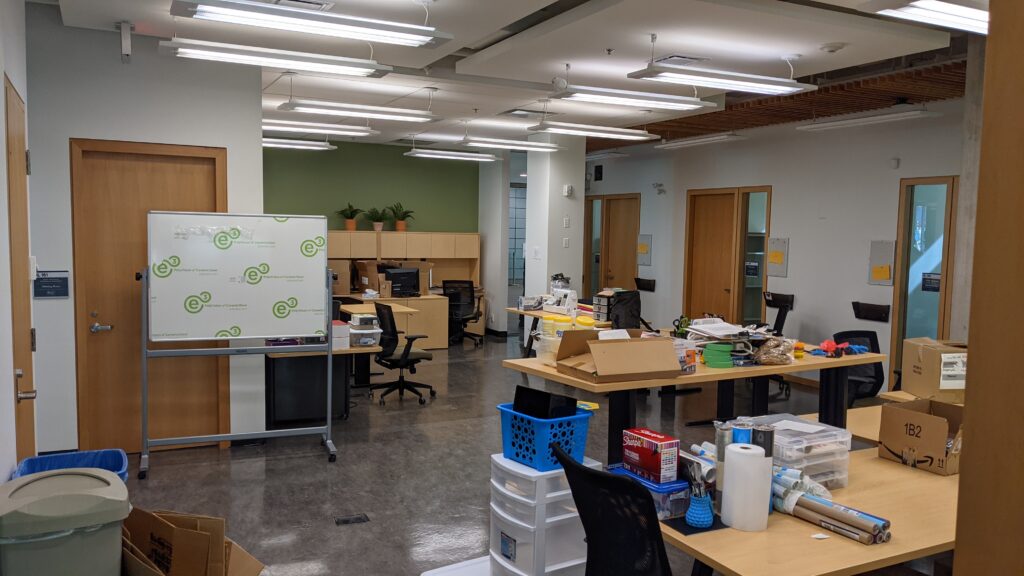
September through December was spent researching and ordering furniture, equipment, and supplies, chasing down delayed items, and setting everything up. We were supported in this work by many others on campus. Staff from Facilities and Information Technology did a huge amount of work to help us get the space ready for launch, and constantly found flexible ways to accommodate our unique requirements. Computers needed to be ordered and set up, networking provisioned, the space painted, the podcasting studio needed soundproofing, new electrical needed to be run throughout the space, among many other things.
We also started learning how everything worked, a process that will probably never really end. Everything in the space — sewing, podcasting, 3D design and printing, computer prototyping — could easily be multiple people’s full time job. While we are not trying to be experts in everything (and it’s important that user’s know that the point of a Makerspace is for them to learn by doing) we needed to know at least enough to keep equipment running and provide basic support.
I also need to thank all the student, faculty, staff, departments, and community members who gave me their time to meet and talk about the space and how it could best support our community. There are too many individuals and groups to thank, but I need to specifically thank staff, students, and faculty from TRUSU, Indigenous Education, the Faculty of Student Development, and CELT, all who spent significant time helping me think through what the space would be.
This is what the space looked like a week before we opened:
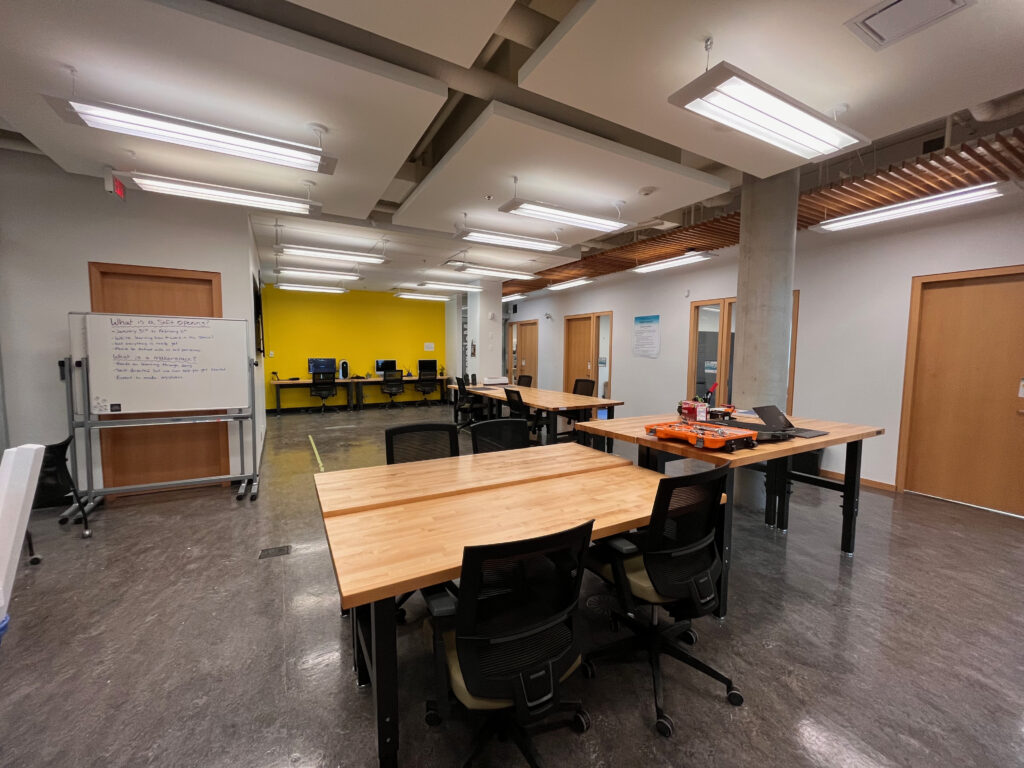
Our Student Research Assistant Kirsten Glass had tremendous WordPress experience and with the assistance of our Web Librarian Shane Neifer built a really beautiful website and blog. One of our summer projects will be replacing a lot of hastily created content and placeholders with more permanent material. We are also starting to have users write blog posts about their experiences for our site, something we’re excited to build on in the future as it provides a venue for sparking ideas and creativity, sharing knowledge, and provides users with a tangible outcome from their time in the space. If you are interested in writing a blog post for us contact us or see more information here.
We also launched our Instagram account and already have over 200 followers. Instagram is where we share the most content, especially things students are doing in the space, and is probably the best place to keep track of what is happening and find inspiration.
Shane Neifer also helped us set up an event calendar and registration system and an equipment reservation system. Our booking system lets users reserve some technology so they know it will be available when they need it. We also worked with our cataloguing librarian Maria Theres Cleire Lauron and cataloguer Leah Stubbings to get some technologies, from microphones and cameras to a sewing machine, set up to be lent out to users. These items can be borrowed by TRU folks the same way a library book is borrowed and more information is available on our Borrowing Technology page.
Opening the Right Way
After delays due to covid we opened on January 31st with a “Soft Launch” which basically means we opened the doors to users but didn’t do any real advertising or promotion beyond our immediate networks. This allowed us to start figuring out how to work in the space and with users while we finished setting up and learning equipment. Even before we opened we had people coming to our door excited about the space. After we soft launched we started having regular users and even managed to run a few tours and events.
On March 4th we were honoured to have Secwepemc Elder Diena Jules lead a smudging ceremony in the Makerspace so we could open in the right way. Staff and students who helped set up the space joined us, along with the Executive Director of Indigenous Education Tina Matthews (who organized the ceremony for us), acting University Librarian Tania Gottschalk, acting Associate University Librarian Julia Wells, and the acting Provost Donna Murnaghan. It was important that we open the space in the right way and this was an opportunity to be reminded of the land on which we are situated, for who we are building this space, and the role of all those who have made it possible.
Following the smudging ceremony we officially opened and by the afternoon we had a full house. It never really calmed down after that until the end of the term.
Tours
We ran a lot of tours this term, from big ones organized well in advance to dozens of small impromptu tours. One major partner in running tours has been Indigenous Education, and specifically Karie Russell and Cicyetkwu Bennett-Dunstan who have organized many of the tours as part of inviting Indigenous students to tour and come to TRU. Our Outreach Librarian Ben Mitchell has also been a major help in facilitating these.
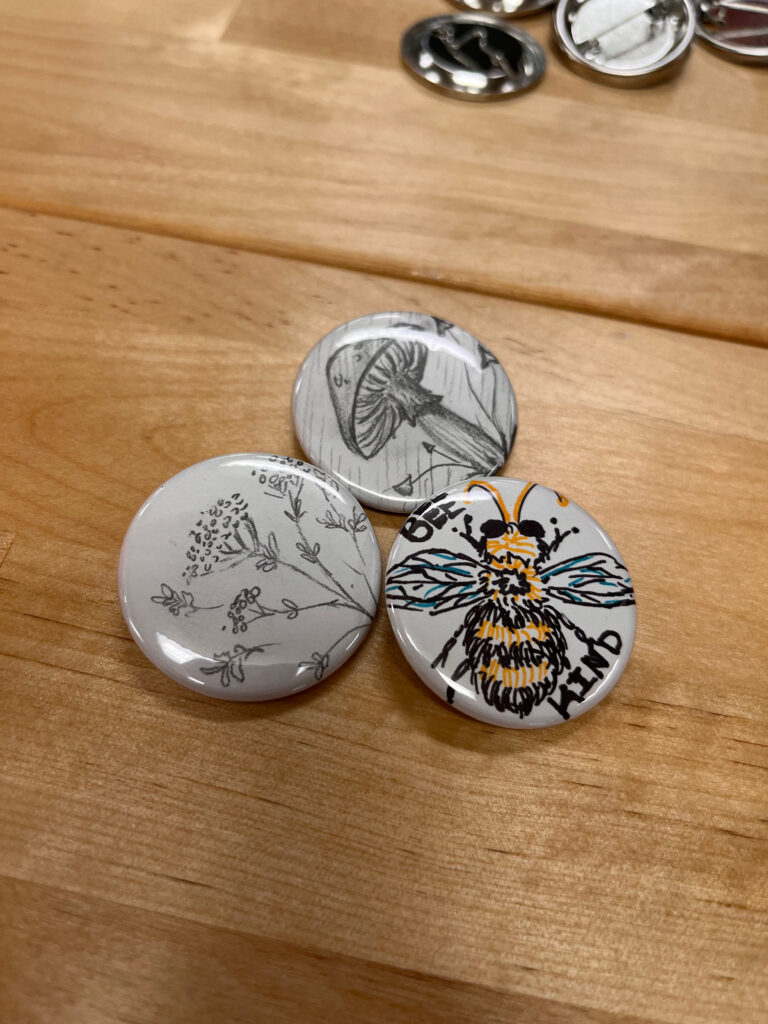
An unexpected and fun thing has been seeing other campus units bringing tours to the space as part of recruiting faculty and students. We are still figuring out how to manage excitement about the space with our limited size, but for now we ask that any group over 5 people looking for a tour contact us so we can make sure someone is available to help and nothing else is scheduled at that time.
Major tours:
- Trades faculty
- Research Office
- SD73 Career Leadership Team
- CELT
- TRUSU Student Caucus and Club Presidents
- TRUSU Computer Science Club
- Indigenous Education Four Directions Tour
- Indigenous Education Transitions Tour
- Software Engineering Incoming 2022 Perspective Students
- Indigenous Education Metis Nation Tour
Events: From Drum Making and Ribbon Skirts to a Highschool Girls Robotics Camp

One of the goals for the Makerspace was to make it a platform for other groups to run events. No one person or group can imagine all the ways the technologies we support could be used, so it makes sense to let others bring their interests and expertise to running programming and events. It’s been wonderful to see this already working, with over 10 events organized by student and faculty groups. Before we even opened we hosted a Drum Making workshop organized by Education and Social Work faculty, and since then we’ve had events ranging from a Women In STEM talk organized by the TRUSU Lean In club, to a Girls Robotics Camp organized by Engineering faculty.
Major events:
- Drum Making
- TRUSU Lean In Women in STEM Event
- TRUSU Culture Club events (beading, Ribbon Skirt Making)
- Women in Engineering High school Girls Robotics Camp
- TRUSU Visual Arts Student Association (VASA) Club Orientation
If you’re interested in having your student club or department run an event in the space you can find more information on our about page.
Class Visits and a CELT Grant for Curricular Development
We also hosted a number class visits to the Makerspace. During these visits I typically give a short talk about the Makerspace followed by time for students to explore some of the technologies in the space. These are time intensive and usually require we close the space for other users, so we will need to be careful in the future about how often we run these events, but they are especially important for bringing in students from related disciplines (like Bachelor of Education students) and of groups that otherwise might not see themselves using the space (the Veterinary Technology students were extremely fun to have in the space).
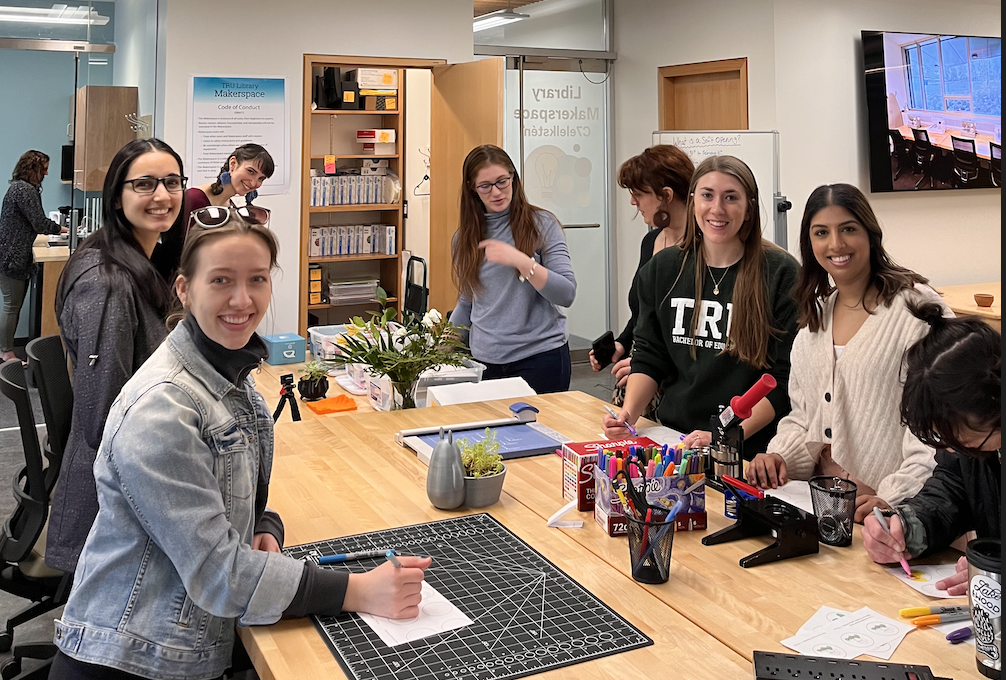
We are also excited for the new CELT Grant (Makerspace Grant: Centre for Excellence in Learning and Teaching: Thompson Rivers University) to support faculty interested in enhancing and building the classroom experience by adopting or experimenting with instructional approaches using technologies and modalities supported by the Makerspace. In total 3 grants of up to $2,000, plus support from the Makerspace and CELT, will be awarded this year. Diane Janes, Coordinator, Learning and Faculty Development, CELT, has spearheaded this grant and I am very thankful for her help.
Observations & Learnings
Enthusiasm & Engagement
Almost everyone who comes into the space has been incredibly excited by the opportunities we provide and it’s been really energizing, if occasionally somewhat overwhelming, to work in a space with this level of enthusiasm and engagement. Many times we’ve overheard, or been told about, users talking about how excited they are and all the things they want to do. There’s almost a level of disbelief that it’s real and they really are allowed to come in and just use equipment and explore. Preserving this level of engagement by managing expectations, keeping our pedagogical mission in mind, minimizing barriers, and protecting staff from being over-extended, is going to be a major ongoing priority.
Emergent Community
One of the most exciting things I’m seeing is the development of an emergent community and culture in the Makerspace. After we opened we started seeing users teaching each other, sharing projects and knowledge, and even becoming friends. They also started helping us: We’ve had students make us custom designed 3D printed holders for button making supplies, gift us paints for using with 3D prints, and write blog posts to share what they are learning with others. We’ve also had students bring in other users for tours, invite their professors and even their whole class to come into the space, and bring things they’ve done in the space to therapy sessions. We’ve also gotten to know our users a lot more than I typically see in other parts of a University — what they are studying but also their plans for the future and their mental health struggles. There is something about making things, working with your hands and learning in the presence of others, that makes people feel comfortable sharing and connecting. One of my major goals for the next year will be to better understand what is happening here, something I will be doing in collaboration with Assessment Librarian Amy Paterson.
Critical Momentum
We are starting to see impacts beyond things we initiated. Other campus groups are bringing people by on tours; students are using the Makerspace for assignments and as part of practicum placements; staff are using our podcasting studio to record podcasts. My favourite example is that at the recent Visual and Fine Arts graduation ceremony, two students were wearing clothing they had made or modified in the space. Given we haven’t been open yet for two months, seeing these second-order impacts has been very encouraging.
Importance of Managing Expectations
One major challenge will be managing expectations. Users sometimes expect we will just make something for them (we won’t) or that we can provide a lot of hands-on instruction. We also bring expectations into our work, especially that we should provide as much help as possible. Yet the underlying pedagogy of the Makerspace is about learning through doing, and if we provide too much help we are doing a disservice to our users who miss the opportunity to go through the process of learning by trial and error and experiment. We stop being a Makerspace and become a print shop or a teaching space like a lab.
We do need to provide some scaffolding for users. We can’t just point at a sewing machine and say there you go. We are working on building some instructional materials and pointers to online help so users can troubleshoot issues themselves.
Balancing Drop-In and Programmatic Use
We will also need to balance different types of users, especially drop-in users with programmatic users (tours, events, curricular). The space is relatively small and usually has only one staff member working at a time. While we want to support programmatic users such as tours, events, and some curricular integration, we need those to be scoped appropriately and planned so they don’t stop the space from working for the rest of our community.
Staffing
Something we learned this semester is that the Makerspace requires a high-level of staffing. As exciting and interesting as the Makerspace is, it can quickly become overwhelming as people come and go, need tours and orientations to particular technologies, and help troubleshooting equipment. They also need time to maintain equipment and the space and do other tasks when the space isn’t open. It also requires staff with the right orientation towards users, an openness towards technology, and a willingness to be flexible. Our current staff are incredible with users, understand the culture we are building, and have built an impressive amount of expertise about the technologies we support. If we are to maintain current hours and especially if we want to expand our service we will need to maintain and probably grow staffing support.
Looking Forward
Looking towards to the summer and fall semester I will be thinking about:
- Having some quiet time: We’re open all summer but we anticipate that like the rest of campus we will be pretty quiet. We all need some quiet time to rest, rejuvenate, think about what we have learned and what we want to do moving forward.
- Finishing basic support materials: Our Student Research Assistants will be helping us develop the basic support materials we need so students can be more independent and self-supporting.
- Planning for a busy fall: Based on how busy March was, we need to be prepared for an extremely busy fall and winter semester and we need to make sure we are ready to manage the space in alignment with our mission and values while protecting staff from burnout.
- Preparing to work with the CELT Makerspace Faculty Grant Award Winners: Part of my summer will be spent finishing a literature review about embedding curriculum into academic Makerspaces so we are better prepared to work with the first round of award winners from this exciting new grant.
- Planning for Assessment: As mentioned I am working with our Assessment Librarian to develop an assessment plan for the Makerspace, with a focus in ethnographic methods to better understand what is happening in the space.
Statistics
How We Count Stats:
The way libraries count statistics is strange. We basically count interactions where an interaction could involve a single question or 20 questions and could take one minute or one hour. If the user then goes away and comes back and asks for help again, that gets counted as a second reference interaction. When we first opened, we were too busy learning how to work in the space to count this way, so until March 28 we just counted each person coming into the space as one interaction, regardless of how many interactions we had withe them. So this period was basically a count of how many people came into the space. After March 28 we started trying to count each “interaction” individually. We also stopped counting the number of people coming into the space and we’re waiting on an automated door counter.
Basically what you see here is an undercount of the number of questions we answered up to March 28 and is better understood as the number of people who came into the space (not including some large groups). After March 28 it is still an undercount as it’s often been just too busy to properly record statistics.
Anecdotally I can say that in March we were probably already pushing the limits of how busy we could be with our current level of staffing. Counting events and tours, we likely had around 600 people come through the space in March.
Reference by Month
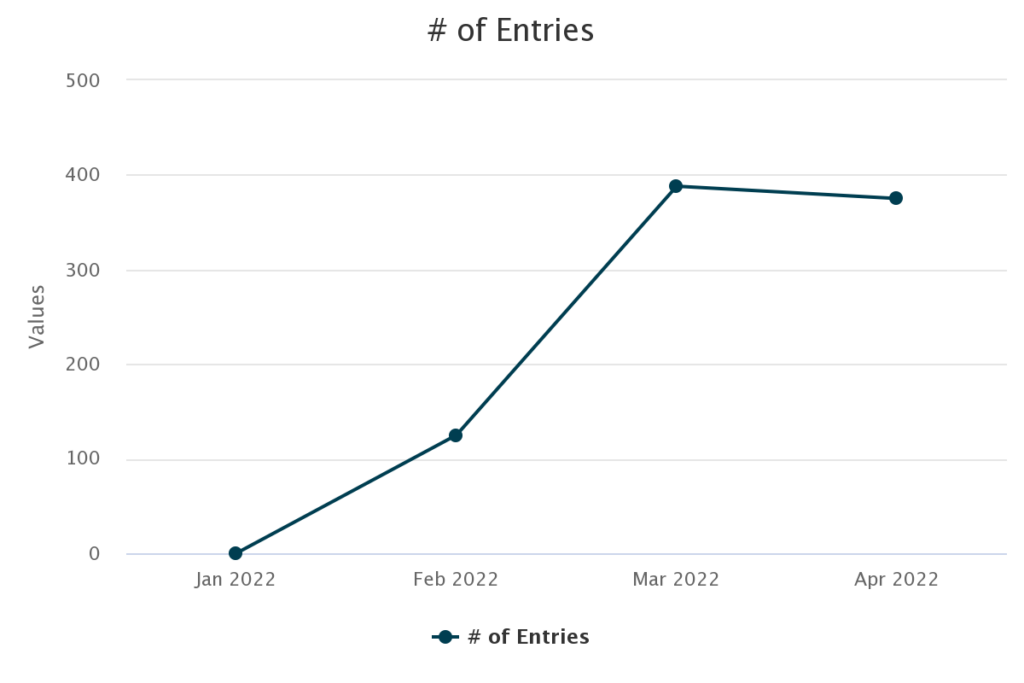
Reference by Technology
